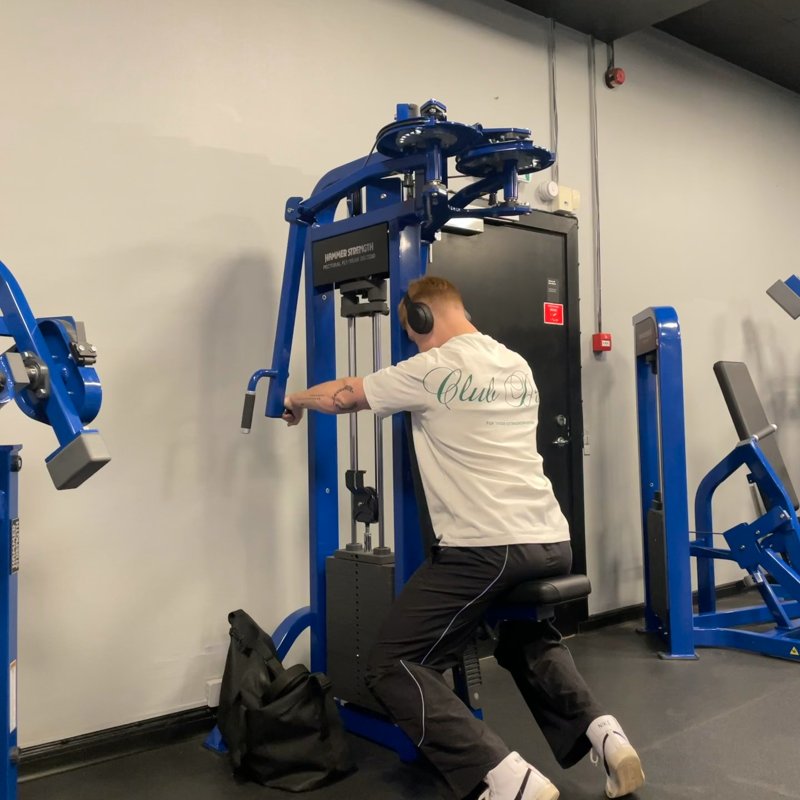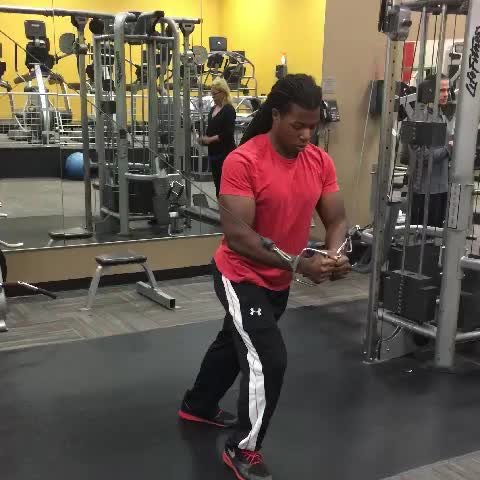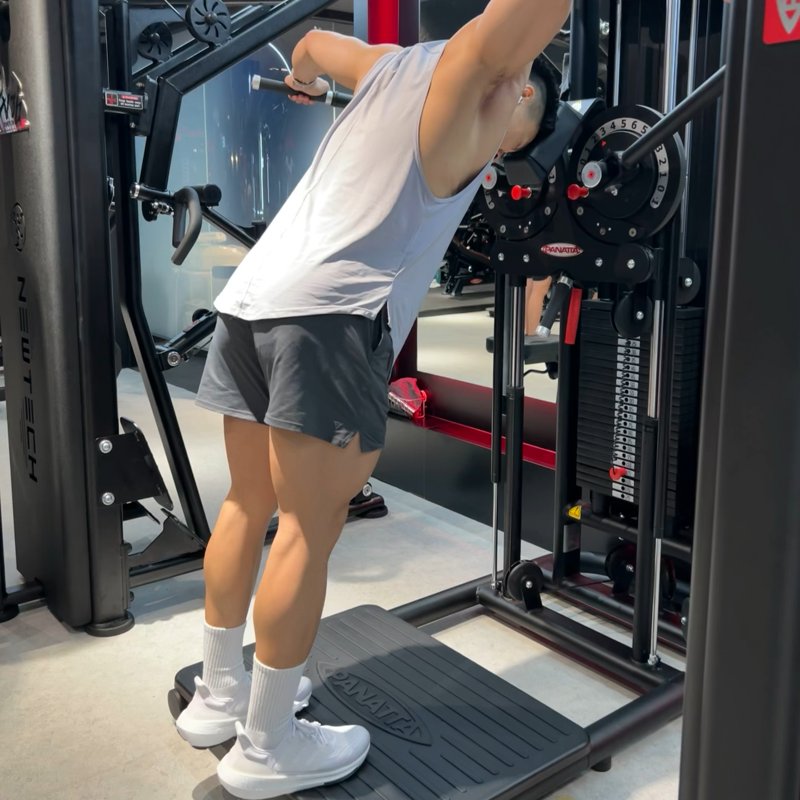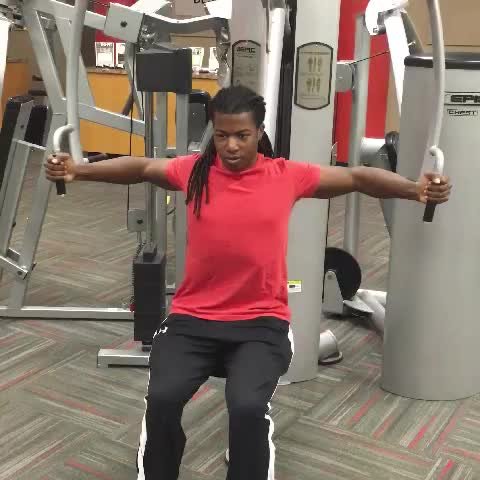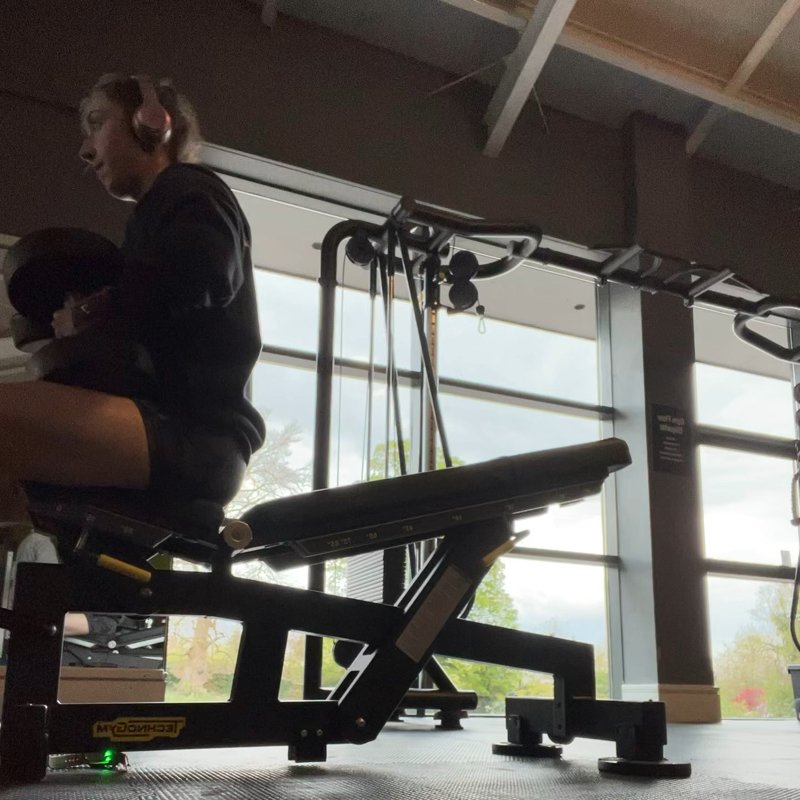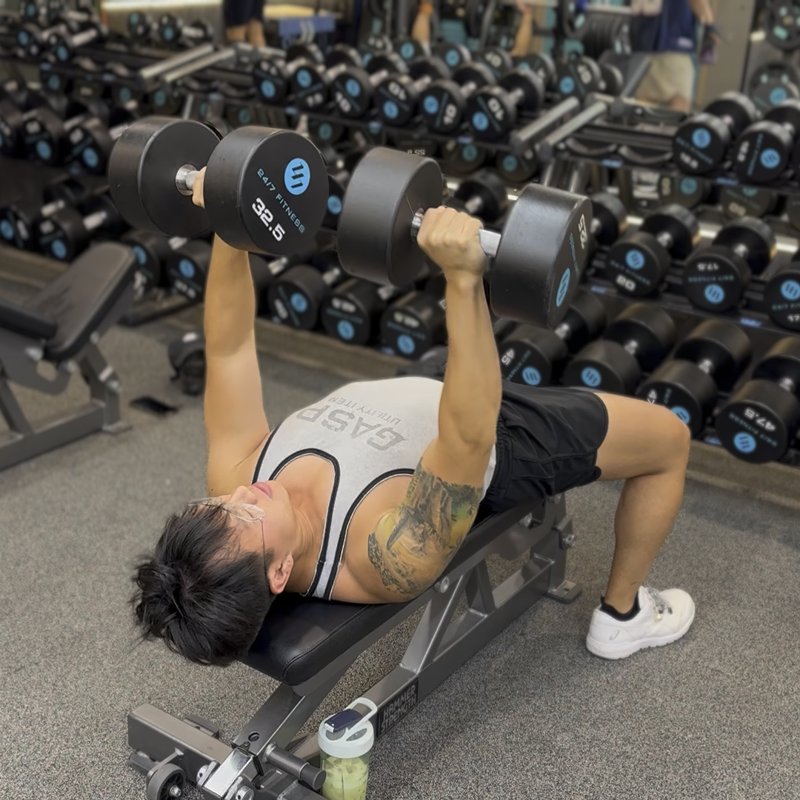Pec Deck: The Ultimate Guide
The Pec Deck is a machine-based chest isolation exercise that targets the pectoral muscles through a guided horizontal adduction movement, providing consistent resistance throughout the range of motion.
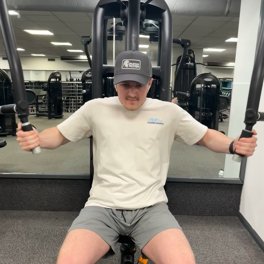
Quick Facts
Key Benefit
Targeted chest isolation with constant tension
Primary Muscles
Pectoralis Major, Pectoralis Minor
Secondary Muscles
Abdominals, Anterior Deltoids, Biceps, Forearms
Equipment
machine
Difficulty
Beginner
Type
Strength
In This Guide
Ready to master the Pec Deck?
Track your progress, see improvements over time, and build strength consistently.
Download GravitusThe Pec Deck, also known as the butterfly machine or chest fly machine, is a highly effective isolation exercise specifically designed to target the pectoral muscles. Unlike compound chest movements such as bench presses that distribute work across multiple muscle groups, the Pec Deck's guided movement pattern deliberately maximizes chest engagement while minimizing triceps and shoulder involvement. What makes this machine particularly valuable is its ability to maintain consistent tension through the entire range of motion while guiding users through the optimal movement path for chest activation. Research has consistently shown that fly-type movements like those performed on the Pec Deck produce higher pectoral muscle activation than many alternate chest exercises, particularly in the mid and inner chest regions. The machine's design also significantly reduces the stabilization and balance requirements present in free weight alternatives such as dumbbell flyes. This reduction in stabilization demand allows lifters to focus purely on chest contraction, making it an excellent choice for both beginners learning proper chest engagement patterns and advanced lifters seeking to isolate and maximize pectoral stimulation. Whether your goal is to build a more developed chest, create balanced upper body aesthetics, or strengthen a crucial pushing muscle group, the Pec Deck offers an accessible, effective, and joint-friendly approach to chest training that complements free weight movements within a comprehensive program.
Benefits of Pec Deck
The Pec Deck offers several unique advantages that make it a valuable addition to any chest training program.
Isolated Pectoral Targeting
Minimizes assistance from other muscle groups compared to compound pressing movements, allowing for focused chest development.
Consistent Tension
Maintains resistance throughout the entire range of motion, potentially increasing time under tension and muscle fiber recruitment.
Joint-Friendly Alternative
Provides a chest training option that many find more comfortable on the shoulders and elbows compared to certain free weight movements.
Enhanced Mind-Muscle Connection
The guided motion and isolated nature helps develop awareness and control of the pectoral muscles, which can transfer to other chest exercises.
Accessibility
Offers an effective chest training option for beginners who may not yet have mastered the coordination required for free weight alternatives.
Proper Form & Technique
Setup
- Adjust the seat height so that when seated, the movement arms align with the middle of your chest (approximately nipple level).
- Adjust the movement arms so they're positioned at 90-degree angles to your torso when in the starting position.
- Sit with your back flat against the back pad, maintaining proper posture with chest up and shoulders back.
- Position your feet flat on the floor, approximately shoulder-width apart for stability.
- Place your forearms against the pads of the movement arms, keeping elbows at approximately 90-degree angles.
- Some machines offer handles to grip; if available, hold these with a comfortable, firm grip.
- Ensure your elbows are aligned with your shoulders, not dropping below or rising above this reference point.
- Take a deep breath and brace your core slightly to stabilize your torso throughout the movement.
Movement
- Initiate the movement by contracting your chest muscles to bring the movement arms together in front of your body.
- Focus on pressing with your forearms rather than your hands, emphasizing pectoral engagement over arm strength.
- Maintain the 90-degree angle in your elbows throughout the movement, avoiding the tendency to straighten the arms.
- Continue the inward movement until the pads nearly touch or your chest reaches maximum contraction.
- Hold the contracted position briefly, focusing on squeezing your chest muscles.
- Slowly control the return to the starting position, resisting the weight rather than allowing the arms to fly open.
- Allow a slight stretch in the chest at the end range, but avoid excessive stretching that might stress the shoulder joints.
- Maintain proper breathing—typically exhaling during the contraction phase and inhaling during the return phase.
- Repeat for the desired number of repetitions while maintaining form and chest engagement throughout.
Key Form Tips
Chest Focus
Concentrate on feeling your chest muscles working rather than simply moving the weight, enhancing mind-muscle connection.
Elbow Position
Maintain consistent elbow alignment throughout the movement, keeping them at chest height rather than dropping or raising them.
Range of Motion
Find a range that allows maximum chest contraction without causing shoulder discomfort, adjusting based on your individual mobility.
Controlled Movement
Avoid using momentum or jerking motions, instead focusing on smooth, deliberate movement under complete control.
Shoulder Position
Keep your shoulders down and back throughout the exercise, avoiding the tendency to round forward as fatigue develops.
Muscles Worked
Primary Muscles
- Pectoralis Major: The large, fan-shaped muscle covering the chest, responsible for bringing the arms inward across the body (horizontal adduction).
- Pectoralis Minor: The smaller chest muscle lying underneath the pectoralis major, which assists with shoulder movement and chest positioning and helps stabilize the scapula during the movement.
Secondary Muscles
- Anterior Deltoids: The front portion of the shoulder muscles that assist in the horizontal adduction movement.
- biceps: The front arm muscles that provide minor assistance and stabilization during the exercise.
- forearms: Activate during gripping and arm positioning throughout the movement.
- abdominals: Engage isometrically to maintain proper posture and torso position throughout the exercise.
Common Mistakes and How to Fix Them
Using Excessive Weight
Selecting a weight that's too heavy, leading to compromised form, reduced chest activation, and increased shoulder strain. Choose a weight that allows you to complete all repetitions with proper form while still challenging your muscles in the final few reps. Focus on feeling the chest working throughout the entire range of motion rather than simply moving the weight. Consider temporarily reducing the weight to perfect your form and mind-muscle connection before progressing to heavier loads.
Improper Elbow Position
Allowing the elbows to drop too low or rise too high, changing the angle of resistance and reducing pectoral engagement. Maintain your elbows at approximately shoulder height throughout the movement. Before beginning each set, take a moment to establish proper positioning, with forearms parallel to the floor and elbows at 90-degree angles. If the machine has adjustable arm positions, take time to find the setting that allows optimal elbow alignment for your body proportions.
Insufficient Range of Motion
Not allowing adequate stretch at the start or contraction at the end of the movement, limiting muscle development. Ensure you begin each repetition with a comfortable stretch in the chest muscles without overstretching, and bring the pads close enough together at the contraction point to feel a complete chest squeeze. If range of motion is limited by the machine's design, adjust your position if possible to optimize the movement for your body. Remember that effective range is determined by muscle tension and activation, not necessarily by how far the machine arms move.
Forward Shoulder Posture
Allowing the shoulders to round forward during the movement, potentially increasing injury risk and reducing chest activation. Maintain a proud chest position with shoulders pulled slightly back and down throughout the exercise. Before initiating each set, perform a brief "posture reset" by pulling your shoulders back and squeezing your shoulder blades together slightly. If proper posture is difficult to maintain, consider temporarily reducing the weight until the correct position becomes more natural.
Using Momentum
Utilizing body movement or jerking motions to move the weight rather than controlled muscle contraction. Maintain a controlled tempo for each repetition, with particular attention to the return phase. Consider implementing a specific tempo prescription (e.g., 2 seconds to contract, 1 second squeeze, 3 seconds to return) to eliminate momentum completely. If maintaining control is difficult, the weight is likely too heavy for optimal chest development.
Pec Deck Variations
Equipment Variations
-
Reverse Pec Deck
Facing the opposite direction on the machine to target the rear deltoids and upper back rather than the chest, providing balanced development for opposing muscle groups.
-

Cable Crossover
Using a cable machine with high pulleys to perform a similar horizontal adduction movement while standing, allowing for greater range of motion and position variability.
-

pectoralis major
A pressing movement rather than a fly, targeting similar muscle groups but with different movement mechanics and potentially allowing heavier loading.
-

pectoralis major
A plate-loaded machine alternative that provides a similar guided movement pattern with potentially different resistance profiles and positioning options.
Technical Variations
-

Single-Arm Pec Deck
Performing the movement one arm at a time to address potential strength imbalances and increase the focus on unilateral chest development.
-

Pec Deck with Isometric Hold
Incorporating a 3-5 second pause at the point of maximum contraction to increase time under tension and enhance the mind-muscle connection.
-

Pulsing Pec Deck
Using small, pulsing partial repetitions at the point of maximum contraction to increase metabolic stress and time under tension.
-

Tempo Pec Deck
Manipulating the speed of different phases of the movement (e.g., 4-second eccentric, 1-second pause, 2-second concentric) to increase time under tension.
Frequently Asked Questions
The Pec Deck and bench press are complementary exercises that stimulate the chest muscles through different mechanisms, making both valuable in a comprehensive chest training program. The bench press is a compound movement that engages multiple muscle groups including the chest, shoulders, and triceps. It allows for heavier loading, potentially greater overall strength development, and more significant metabolic demand. The Pec Deck is an isolation exercise that more specifically targets the pectoral muscles through horizontal adduction, a movement pattern different from pressing. Research has shown that fly-type movements like the Pec Deck often produce higher pectoral muscle activation than pressing movements, particularly in the mid and inner chest regions. From a practical standpoint, the ideal approach for most trainees is to include both movement patterns in their chest training program. A common and effective strategy is to begin chest workouts with compound pressing movements like bench press variations when energy and strength are highest, then follow with isolation work like the Pec Deck to further fatigue and stimulate the chest muscles. For those with specific goals, emphasis might shift—those primarily concerned with strength development might prioritize bench press variations, while those focusing on chest hypertrophy and definition might place greater emphasis on isolation movements like the Pec Deck.
The appropriate weight depends on your experience level, current strength, training goals, and most importantly, your ability to maintain proper form and muscle engagement. Unlike compound exercises where progressive overload through weight increases is often emphasized, isolation machines like the Pec Deck require a more nuanced approach focused on quality of contraction. As a general guideline, select a weight that allows you to complete your target repetitions with proper form while still finding the last 2-3 reps challenging. For beginners, this typically means 12-15 repetitions with a weight that feels moderately difficult. Intermediate lifters might work in the 10-12 repetition range with a more challenging weight. Advanced lifters might occasionally use heavier weights for 8-10 repetitions. The key indicator is muscle engagement - if you're unable to feel your chest muscles working throughout the movement, cannot maintain proper shoulder and elbow positioning, or find yourself using momentum, the weight is too heavy. Because the Pec Deck is primarily used for chest development rather than strength demonstration, focus on the quality of muscle contraction rather than the quantity of weight moved. Consider incorporating periodic higher-repetition sets (15-20) with perfect form to maximize the muscle-building stimulus without unnecessarily increasing joint stress.
The optimal sequencing depends on your primary training goals, though there are benefits to both approaches. Most traditional training programs recommend performing compound exercises like bench press first, followed by isolation movements like the Pec Deck. This approach maximizes strength and performance on the technically demanding compound lift when energy and focus are highest. The isolation work then serves to further fatigue the target muscles after the heavier compound work. However, the "pre-exhaustion" technique deliberately reverses this order, performing isolation exercises like the Pec Deck first to fatigue the chest muscles before moving to compound movements. This approach can increase chest muscle activation during the compound exercise, as the pre-fatigued pectorals may require greater neural drive to perform the movement. This can be valuable for advanced trainees seeking to emphasize chest development or work around certain limitations. If overall strength development is your primary goal, perform bench press variations first in your workout. If maximum chest muscle development is your focus, both sequences can be effective and could be alternated within your program. Some successful bodybuilders even separate chest training into two sessions - one focused on compound pressing movements and another dedicated to isolation exercises like the Pec Deck - to allow maximum energy for each movement type.
The Pec Deck can be either beneficial or problematic for individuals with shoulder concerns, depending on the specific condition, exercise execution, and individual factors. For some people with shoulder issues, the guided motion of the Pec Deck actually provides a safer alternative to free weight fly movements, which require greater stabilization and control. The machine's fixed movement path can help prevent excessive range of motion that might aggravate certain conditions.
However, the traditional Pec Deck position—with arms abducted to 90 degrees and elbows flexed—can potentially create impingement for individuals with certain shoulder conditions if the movement is performed incorrectly or with excessive range of motion.
If you have shoulder concerns but still want to include the Pec Deck in your training, consider these modifications - - Limit the range of motion, particularly at the stretched position, stopping before any discomfort arises - Use a controlled tempo, avoiding sudden movements that could stress the shoulder joints - Consider adjusting the seat height slightly to find a more comfortable angle for your individual shoulder mechanics - Ensure proper shoulder positioning throughout the movement, keeping shoulders down and back rather than allowing them to round forward
For persistent or significant shoulder issues, consult with a healthcare professional who specializes in sports medicine before incorporating the Pec Deck. Many physical therapists can provide specific modifications based on your particular condition. Alternative chest exercises like cable flyes with arms angled slightly downward or incline push-ups might be more suitable for some individuals with shoulder concerns.
Video Demonstrations

Log in to watch video demonstrations
Login to Watch3 video demonstrations available
Find more video demonstrations in the Gravitus app
Tips from the Community
-

Pec deck is the same machine pectoral fly
-

hands out straight, butt up, big chest, squeeze
Track your progress with Gravitus
Download Gravitus to log your workouts, track your progress, and join a community of fitness enthusiasts.

Helpful Resources
One Rep Max Calculator
Find your one rep max for any exercise without maximal testing. Essential for developing effective strength training programs.
Calculate 1RMWorkout Programs
Follow structured workout programs created by fitness professionals to maximize your strength and muscle gains.
View Programs